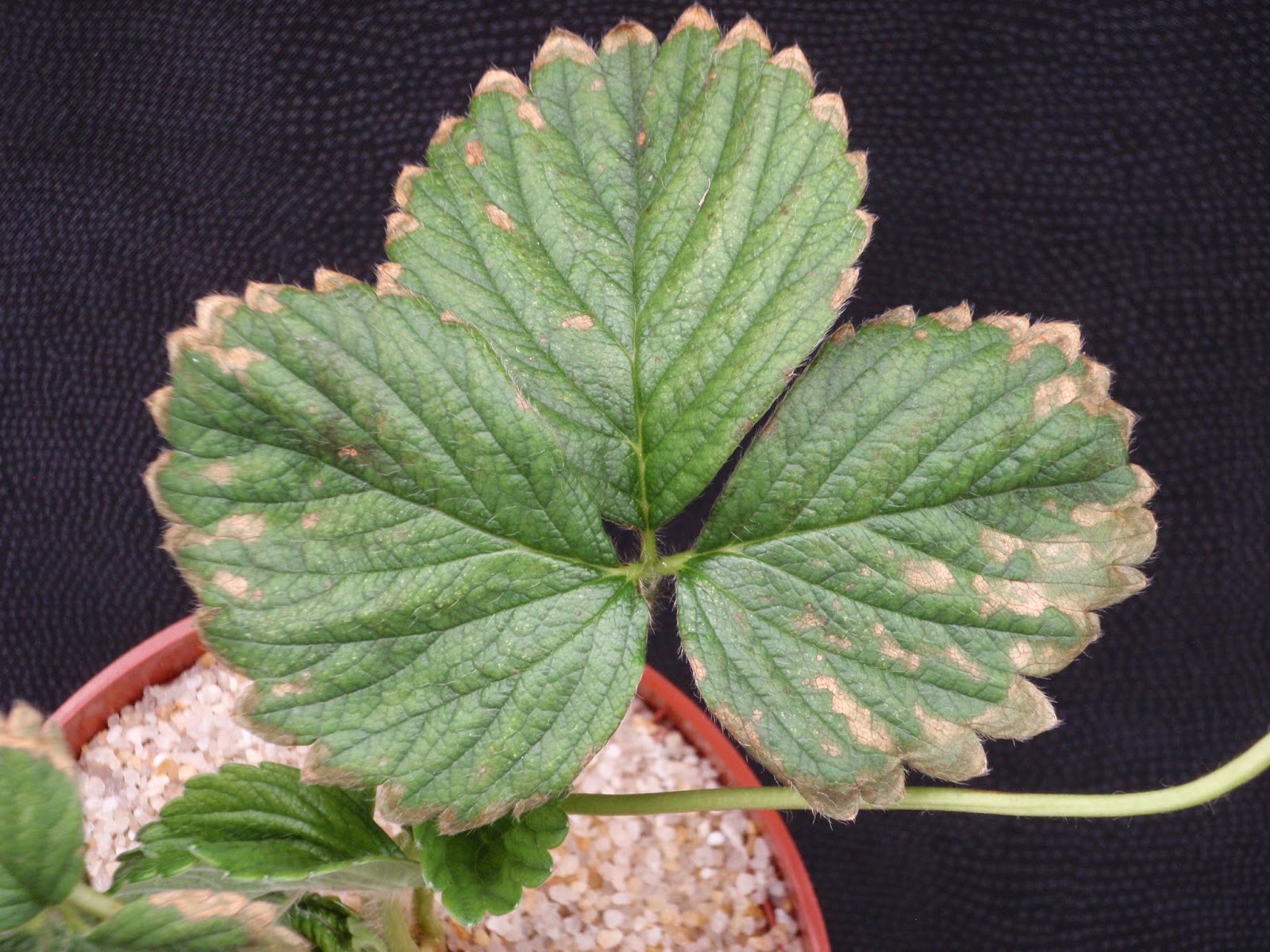
Scientists and IT developers at North Carolina State University are creating an online diagnostic tool that will assist strawberry growers in determining and resolving crop-related issues.
Starting June 30 strawberry growers will have a new online diagnostic tool to help them identify problems they may encounter with their crops. As part of the
National Strawberry Sustainability Initiative grant, which is funded by the Walmart Foundation, a group of North Carolina State University scientists and extension IT developers
are creating a web-based interactive diagnostic key for growers. It will have application to both outdoor- and indoor-produced strawberries throughout the United States.
The key will be accessible through users’ computers, tablets and smart phones. It will be available through the North Carolina Cooperative Extension Strawberry Growers Information website.
A holistic approach
Brian Whipker, professor of floriculture–research and extension, who heads up the project, said the key
is based on attributes.
“There are 21 insect pests, 26 diseases, 14 nutritional disorders and 26 physiological disorders in the key,” Whipker said. “It covers the primary sources of problems. The herbicide damage probably won’t have application to greenhouse production, but almost everything else, including the diseases, nutritional disorders, and most of the physiological disorders and insects will apply.
“When users log onto the website there is a filter on the left side of the homepage that is based on four categories (insect, disease, nutritional and disorder) that they can sort by. The term physiological was replaced by the word disorder.”
A user can click on the insect category and receive all 21 insect pests.
“If the users don’t want to search by type then they can choose differentials based on leaf condition that has 12 options or leaf color that has 10 options,” Whipker said. “They can also search by leaf location, which has six options. Fruit conditions have eight options, including size, texture and color. There are also attributes for root and crown problems.”
 |
| The strawberry diagnostic tool being developed at North Carolina State University covers 88 different attributes, including nutritional disorders such as boron toxicity (top) and iron deficiency (bottom). |
Filters narrow problem identification
Whipker said the key allows users to narrow down the problem identification by using a series of filters.
“If a grower has interveinal chlorosis, the key can filter the problem down to 12 options,” he said. “The grower can add another filter for mature leaves, which narrows the choices down to four options. The key then filters for a combination of interveinal chlorosis and mature leaves.
There are other characteristics that are listed and the grower can read down that list and sort the problem cause from there. There is one thumbnail photo of each problem that the user can choose from.”
There are different headers for each of the four categories. For diseases there are headers for causal agents including the scientific names. The headers for nutritional disorders include Problem (i.e., iron deficiency); Symptoms (with photographs and a listing of similar problems like mimics); Additional Information; Diagnostic Tips; Corrective Measures and Management.
Whipker said once a grower chooses what he thinks is causing the disorder, he can click on the problem and is taken to a fact sheet.
“There are 88 attributes and there is a fact sheet on each one,” he said. “Most of the fact sheets are two pages long. Some of the disease fact sheets are four to six pages. There are also some hyperlinks for other online resource publications that are available.”
Additional crop information
Whipker said the key template that was used for the strawberry diagnostic tool would have application to other crops.
“Diagnostics are my driving force,” he said. “I have invested $20,000 in a system that can induce nutrient disorders. I’d like towork on the nutrient disorders of greens and herbs. Currently there is no diagnostic key available for herbs.”
Whipker has also produced a nutrient disorder guide for tomatoes, “Tomatoes: Troubleshooting Guide to Nutritional Disorders”.
N.C. State University horticulture professor Brian Whipker has released a book on tomato nutrient disorders that were greenhouse-induced.
“The tomato disorder publication is more applicable to greenhouse tomatoes than field-grown. All of the tomato nutrient disorders were greenhouse-induced. A field-based system is more forgiving. With a hydroponic or water-production system there is no residual. If a grower forgets to put in boron, the plants are going to show the deficiency symptoms.”
For more: Brian Whipker, North Carolina State
University, Department of Horticultural Science; brian_whipker@ncsu.edu.
A team effort
North Carolina State University team members on the “Strawberry Diagnostics: a Problem Solving Tool” project include:
Hannah Burrack, Department of Entomology
Frank Louws and Barbara Shew, Department of Plant Pathology
Rocco Schiavone,
Jeremy Pattison and
Brian Whipker, Department of Horticultural Science
Rob Ladd (developer) and
Rhonda Conlon, Extension Information Technology
David Kuack is a freelance technical writer in Fort Worth, Texas; dkuack@gmail.com.






